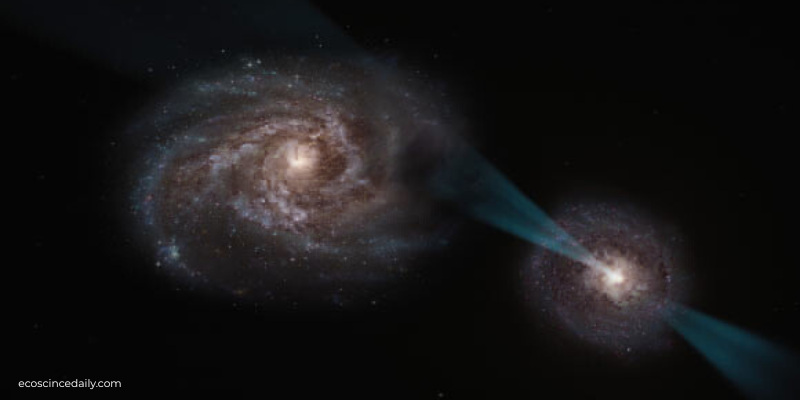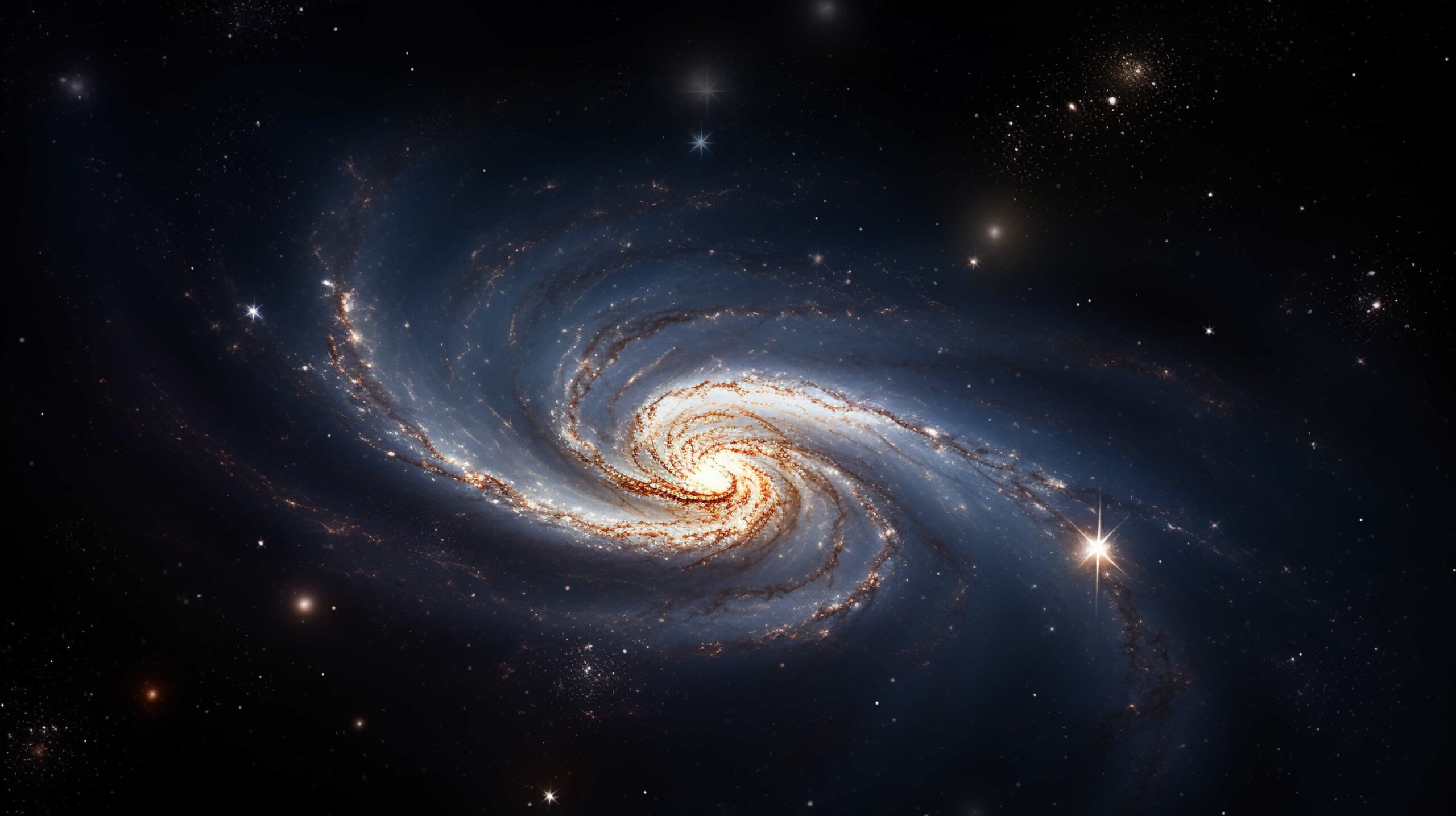May 23, 2025 — ESO Headquarters, Germany — In a groundbreaking astronomical discovery, scientists using the European Southern Observatory’s Very Large Telescope (VLT) and the Atacama Large Millimeter/submillimeter Array (ALMA) have captured a dramatic cosmic event described as a “cosmic joust.”
For the first time, researchers have observed a quasar—an extremely bright and energetic region at the center of a galaxy—firing a powerful beam of radiation that pierces straight through a neighboring galaxy. This phenomenon, resembling a high-speed, intergalactic duel, has stunned scientists and provided new insights into how galaxies interact and evolve over time.
The quasar in question is powered by a supermassive black hole that consumes surrounding gas and dust. As this material is drawn in, it emits intense radiation, enough to outshine the rest of the galaxy. In this case, the beam from the quasar is so focused and forceful that it cuts into a nearby galaxy, severely disturbing its internal structure.
According to the team of astronomers, this blast of radiation is destroying the gas clouds within the second galaxy—clouds that would normally form new stars. What remains are only the densest fragments, likely unable to support future star formation. As a result, the affected galaxy is being stripped of its ability to grow and evolve.
“This is one of the most striking examples we’ve seen of how a quasar can directly influence its environment,” said lead researcher Dr. Santiago Arribas. “It’s a clear demonstration of how galaxy interactions can be violent and transformative.”
The repeated high-speed interactions between the two galaxies have led researchers to dub the system the “cosmic joust.” The term reflects the dramatic nature of the encounter, where two massive galaxies appear to collide with the force and precision of medieval knights in a tournament.
This discovery, now published in the scientific journal Nature, offers valuable information about galactic behavior in the early universe. Billions of years ago, when galaxies were more tightly packed, such powerful interactions were likely more common. Events like this could have played a key role in shaping the structure of galaxies we observe today.
The findings underline the importance of observing distant, energetic phenomena to better understand the forces shaping our universe.

